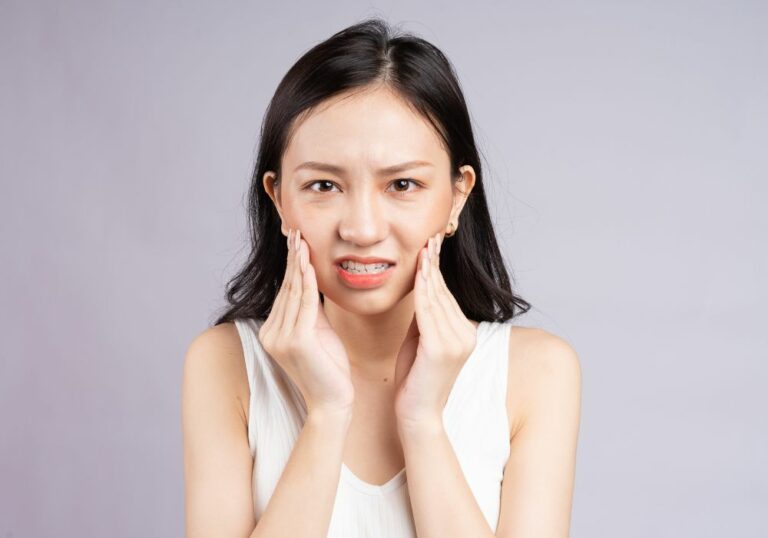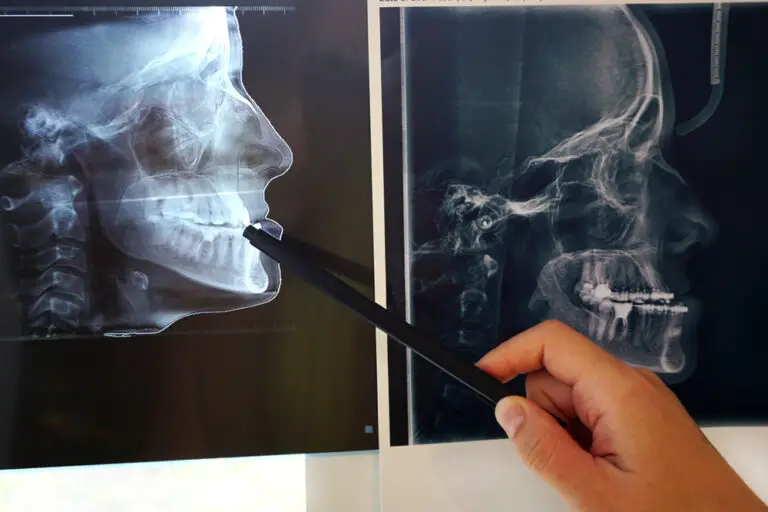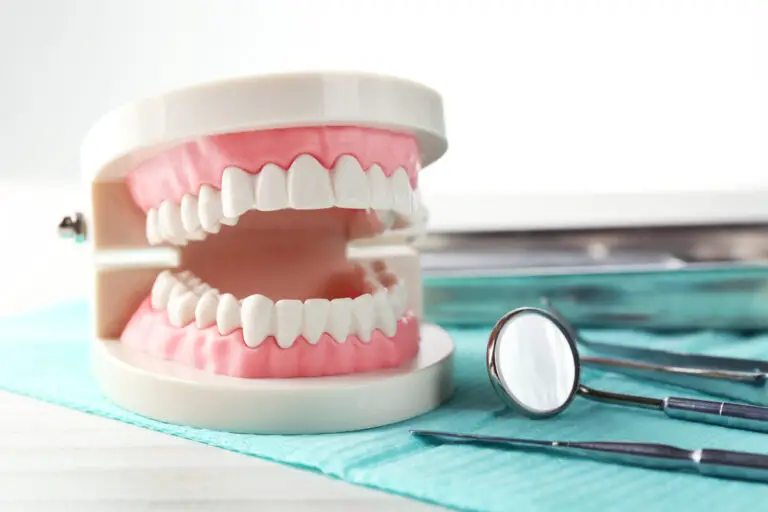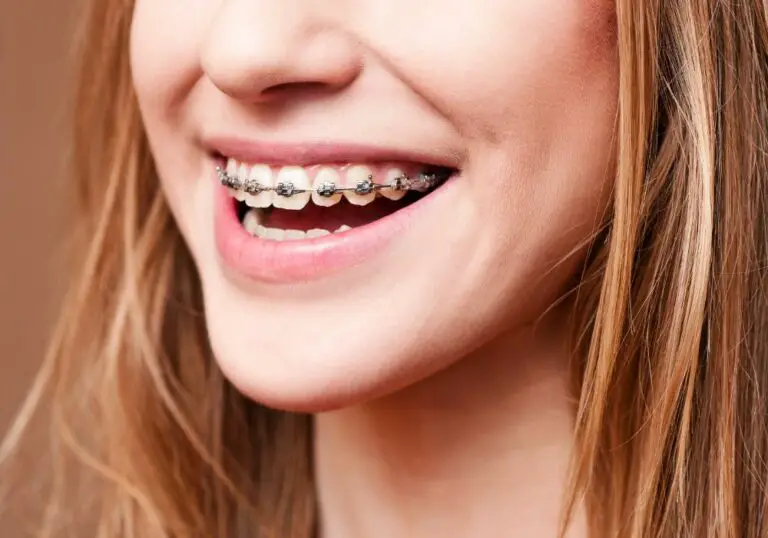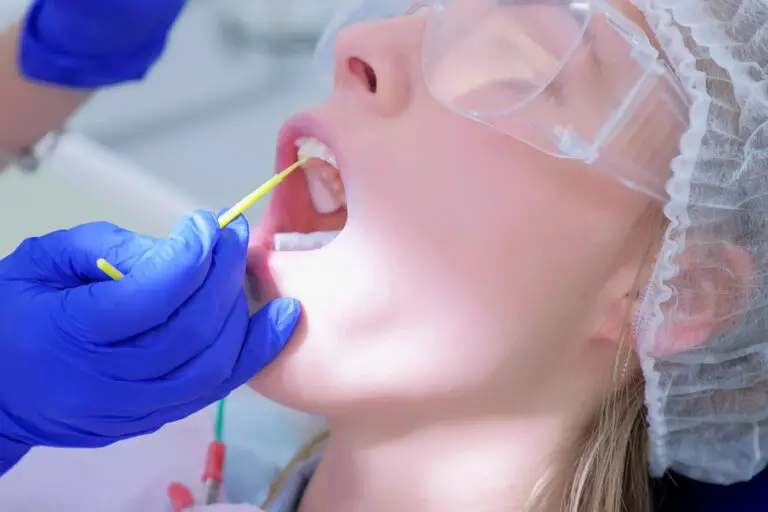Enamel paint is a type of paint that is commonly used for painting surfaces like wood, metal, concrete, masonry and drywall. It provides a hard, glossy and durable finish. The question of whether enamel paint can also be used on teeth comes up sometimes, especially among people looking for quick cosmetic solutions to improve the appearance of their teeth. However, using enamel paint on your teeth is not recommended and can actually be quite dangerous. In this article, we’ll look at what enamel paint is, why you shouldn’t use it on your teeth, and safer alternatives for whitening or coloring your teeth.
What is Enamel Paint?

Enamel paint, also known as gloss paint, is a type of paint that dries to a hard, usually glossy, finish. The term “enamel paint” refers to the high-gloss finish of the paint, which resembles vitreous enamel. Enamel paints are typically oil-based, involving volatile organic compounds (VOCs) such as mineral spirits. They provide superior durability and resistance to scratches, chips, and weather compared to other paint finishes like flat or eggshell.
The hard finish of enamel paint is produced by the way the paint cures and bonds to the surface. As the solvents in the paint (such as mineral spirits) evaporate, polymers in the paint crosslink to form a plastic-like coating that adheres tightly to the surface. The polymers form durable, rigid bonds that create the hard finish. Pigments are also embedded in the paint to provide color. The glossy appearance comes from light reflecting off the smooth surface of the cured paint.
Enamel paint formulations have changed over the years to reduce VOCs and toxicity, but traditionally, they contain potential irritants and toxins such as lead, solvents, formaldehyde, and plasticizers. Safety precautions are recommended when using enamel paints.
Why You Shouldn’t Use Enamel Paint on Your Teeth
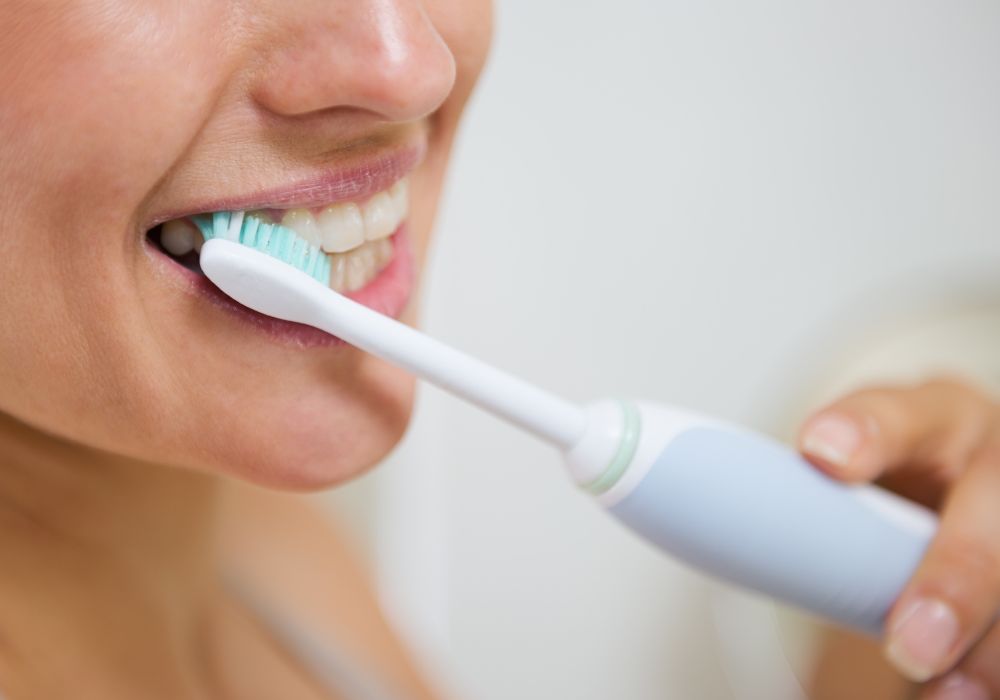
Using enamel paint on your teeth may seem like an easy way to quickly whiten them or create a bright, eye-catching smile. However, enamel paint is absolutely not meant for use in the mouth. There are several important reasons why enamel paint should never be used on your teeth:
Toxicity
As mentioned above, enamel paints traditionally contain a number of toxic ingredients like lead, formaldehyde, solvents and plasticizers. Lead exposure can cause brain and kidney damage, hearing loss, and other harmful effects. Formaldehyde is a suspected human carcinogen. Solvents like mineral spirits are irritating to the eyes, skin, and respiratory system. Plasticizers can disrupt hormones. These types of ingredients have no business being in your mouth. Swallowing or ingesting enamel paint can be very dangerous.
Risk of Accidental Ingestion
If enamel paint is applied to your teeth, it could very easily be accidentally swallowed, especially given the amount of enamel paint that would be needed to fully cover teeth. Any paint that is swallowed could cause damage to the digestive tract, intestinal blockages, nausea/vomiting, chemical burns, and poisoning from toxic ingredients.
No Oral Safety Standards
Enamel paints are only formulated, tested and approved for use on surfaces like wood, concrete, metal and drywall. They have NOT been formulated or approved for use inside the human mouth. There are no safety standards in place for ingesting or applying enamel paint orally.
Difficult Removal
The durable, hard finish of cured enamel paint is very stubborn and difficult to remove from surfaces. Trying to grind or scrape enamel paint off of teeth would be an extremely messy, inconvenient and potentially damaging process. It would be very easy to damage tooth enamel in the removal process.
No Whitening Power
While enamel paints come in a range of colors, they don’t actually have any real teeth whitening abilities. Although applying enamel paint to teeth may temporarily mask discoloration with an opaque coating, it won’t brighten your smile by removing stains or making teeth intrinsically whiter.
Interferes with Dental Work
Applying enamel paint to your teeth could interfere with proper adhesion if you need dental work like braces, fillings, crowns or veneers. The paint would need to be removed prior to allowing adhesives and dental materials to bond directly to teeth.
Risk of Infection or Irritation
Getting enamel paint on your gums or brushing paint over gaps between teeth comes with risks of irritation, inflammation, infection, and pain. Enamel paint is not sterile and not designed for use in the mouth.
Healthy, Safer Alternatives

Instead of considering putting enamel paint on your teeth, explore these healthier, safer alternatives to brighten or color your smile:
- Whitening toothpaste – Look for toothpastes containing gentle abrasives and/or bleaching agents like hydrogen peroxide to lift stains and naturally whiten teeth over time with regular brushing.
- Whitening strips – Whitening strips that mold to your teeth and use peroxide gel can gradually brighten teeth with periodic application. Use as directed.
- LED teeth whitening kits – Kits that apply whitening gel to teeth and utilize LED light to accelerate bleaching are available. Most kits require less than an hour of total application time.
- Professional whitening – For maximum whitening, visit your dentist for custom-fit whitening trays with strong bleaching gel. Follow safety precautions.
- Dental bonding – Bonding material applied directly to discolored or damaged teeth can mask flaws and mimic natural tooth color.
- Dental veneers – Veneers are thin artificial shells that adhere to front teeth to create perfect color, shape and alignment. An irreversible option.
- Temporary tooth tinting – Specialized rinses can temporarily tint your teeth vibrant colors for a fun effect that washes off. Always follow directions.
- Tooth jewelry – For added sparkle, safe dental gems can be temporarily glued to teeth. Avoid swallowing loose gems.
The Takeaway
While it may seem like a quick fix to put enamel paint on your teeth, it is absolutely not a safe, viable or advisable option. Enamel paint contains toxic ingredients and was never meant for use in the mouth. Healthy alternatives exist to brighten your smile that won’t put your health at risk. Always consult your dentist to determine the safest cosmetic option for your teeth. Avoid DIY shortcuts like painting enamel directly onto your teeth, no matter how trendy they may seem. Your dental health and safety is too precious.
Frequently Asked Questions
Is enamel paint the same as nail polish? Can I use nail polish on my teeth?
No, enamel paint and nail polish are not the same and nail polish should not be used on your teeth. Enamel paint is specifically formulated for painting surfaces like wood and metal. Nail polish is formulated for coloring fingernails and toenails. While nail polish is not meant for teeth, it is generally less toxic than enamel paint, containing fewer solvents. However, nail polish still contains chemicals and pigments that have no place in your mouth. Accidentally swallowing nail polish could cause gastrointestinal upset. Like enamel paint, nail polish also provides no real whitening benefit to teeth. Do not attempt to paint nails polish directly on your teeth.
Can I use art acrylic paint on my teeth?
No, art acrylic paint should not be applied directly to your teeth. Like enamel paint, art acrylics are only designed and tested for safe use on art surfaces like canvas, paper, sculpture and model building. They are not formulated for oral use and contain polymers, resins, pigments and solvents that do not belong in the mouth. Acrylic paint could be accidentally ingested, cause irritation/infection of oral tissue and gums, and be difficult to fully remove from teeth later. Acrylic paint would only temporarily coat teeth with color and provides no real whitening. Do not paint craft/art acrylics directly onto your teeth.
Is it safe to get a DIY whitening kit from a beauty supply store?
It’s generally not advisable to use DIY whitening kits from a beauty supply store. These kits are not regulated or designed specifically for dental use in the same way professional dental whitening products are. They may contain ingredients in unsafe concentrations that could damage tooth enamel and irritate oral tissue when used incorrectly. Improper use also increases the risk of over-whitening teeth. For safest results, visit your own dentist for a customized professional whitening treatment plan.
Can Clorox whiten my teeth?
No, you should never use Clorox or any household bleach product to try and whiten your teeth. Bleach is extremely corrosive and putting it in your mouth could burn and damage your gums, cheeks and tongue. Swallowing it can be poisonous. The bleach could also strip enamel from your teeth, weakening them and causing rapid decay. Household bleach has a very high pH that is unsafe for extended contact with teeth. While bleach might appear to “whiten” teeth superficially at first, it is doing so through caustic damage, not true whitening.
Is chewing gum with whitening ingredients effective?
Chewing gums that claim to help with tooth whitening are unlikely to produce dramatic results on their own, but may provide a small whitening boost when used together with other teeth cleaning methods. Look for gums containing polyols like xylitol and erythritol that can help reduce stains. Beware of gums with harsh abrasives that could wear down enamel over time. The whitening agents in gum react slowly and briefly versus professional applications. For optimal whitening, consult your dentist about custom trays with concentrated bleaching gel treatment.

